Alibaba Cloud Database is constantly helping and driving the cloud digital transformation for our customers' businesses. Let's learn about the latest updates and innovations in this article.
In 2009, Alibaba proposed a "de-IOE strategy" (IBM server, Oracle database, EMC storage) and adopted open source MySQL. By 2020, Alibaba Cloud's database accounted for the largest market share in China, surpassing traditional commercial databases for the first time, and was named a LEADER in the 2020 Gartner Magic Quadrant for Cloud Database Management Systems.
After ten years of development, the Alibaba Cloud database has now carried almost all core businesses of the Alibaba economy, including the Double 11 Shopping Festival, while providing database services for more than 100,000 users on the public cloud with the number of database instances more than 400,000.
Gartner's description of Alibaba Cloud Database strengths in the Cloud Database Magic Quadrant report 2020 include:
For the detailed Gartner Magic Quadrant report, please visit this link
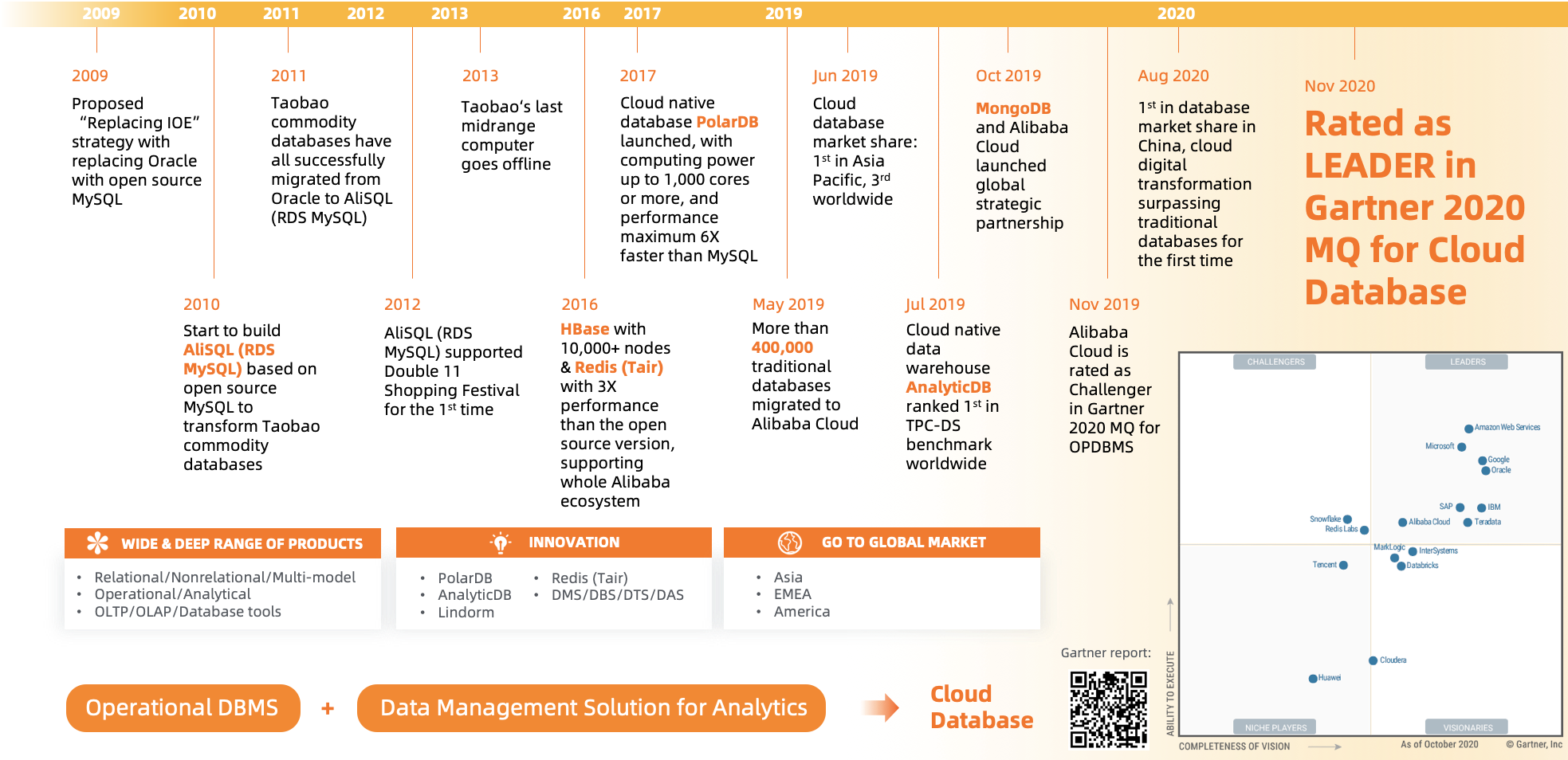
In order to meet the needs of the majority of MySQL users for version 5.7, the cloud native version of MySQL, PolarDB MySQL, supported version 5.7 in September 2020. At the time of writing, PolarDB MySQL is the world only 100% MySQL compatible cloud native database, which supports all mainstream MySQL versions for customer on the public cloud.
Customers can choose to migrate to different PolarDB MySQL versions according to the corresponding MySQL version, and enjoy the flexibility and extreme elasticity brought by Cloud Native. For detailed steps on migration, please refer to the following guides:
| Source MySQL | Target Database | Migration Guide |
| MySQL with public IP address | PolarDB MySQL | https://www.alibabacloud.com/help/doc-detail/100167.htm |
| Amazon Aurora MySQL | PolarDB MySQL | https://www.alibabacloud.com/help/doc-detail/124691.htm |
| Alibaba Cloud RDS MySQL | PolarDB MySQL | https://www.alibabacloud.com/help/doc-detail/100169.htm |
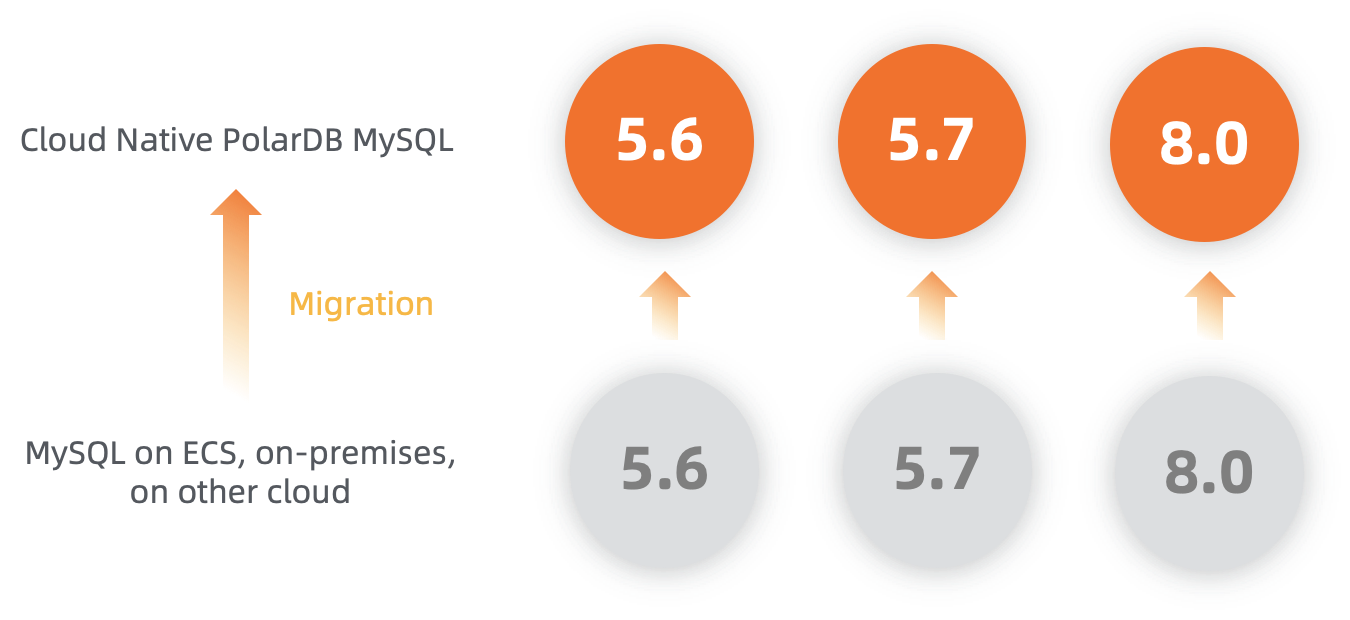
In the past few months, thousands of PolarDB MySQL 5.7 database instances have been used in the public cloud for customer business systems.
In response to the needs of customers for global business applications, GDN (Global Database Network) will be supported in PolarDB MySQL 5.7 in April, 2021. To learn more about PolarDB GDN, please watch this webinar
Starting from February 5, 2021, MySQL will officially no longer provide follow-up update and maintenance of MySQL 5.6, but Alibaba Cloud RDS MySQL 5.6 will continue to provide update and maintenance services, extending for three years to February 05, 2024.
PolarDB MySQL 5.6 is not affected, and Alibaba Cloud will continue to provide support for this version.
Alibaba Cloud recommends that you purchase an instance of RDS MySQL 5.7 or 8.0. If you need to purchase a new instance of RDS MySQL 5.6 version, all RDS MySQL 5.6 version instances can continue to be used normally, and the Alibaba Cloud RDS team will continue to provide update and maintenance services.
It is recommended that you upgrade RDS MySQL 5.6 to 5.7 or 8.0, or migrate RDS MySQL 5.6 to PolarDB MySQL (5.6, 5.7 or 8.0) before the extension expires. You need to create a new instance of RDS MySQL 5.7 or 8.0, or PolarDB MySQL (5.6, 5.7 or 8.0) and then migrate data to the new instance through Data Transmission Service (DTS). For detailed steps on migration, please refer to the following guides:
| Source MySQL | Target Database | Migration Guide |
| MySQL with public IP address | PolarDB MySQL | https://www.alibabacloud.com/help/doc-detail/100167.htm |
| Amazon Aurora MySQL | PolarDB MySQL | https://www.alibabacloud.com/help/doc-detail/124691.htm |
The PostgreSQL community released version 13 in September 2020. Two months later, PostgreSQL 13 was made available for sale on Alibaba Cloud. PostgreSQL 13 has performance improvements in many aspects, including the following key points:
For detailed PostgreSQL 13 release features, please refer to: PostgreSQL 13 Release Notes
If you want to know more about the performance optimization of PostgreSQL 13 relative to PostgreSQL 12, you can refer to the PostgreSQL TPROC-C Benchmarks released by EDB: PostgreSQL 12 vs. PostgreSQL 13 Performance
MongoDB and Alibaba Cloud has launched strategic partnership since 2019. This partnership allows customers to easily adopt and consume MongoDB-as-a-Service through Alibaba Cloud. Therefore, 2 months after MongoDB releases version 4.4, MongoDB 4.4 will also come to Alibaba Cloud and will be released soon. According to the official description, MongoDB 4.4 is a "User-Driven Engineering" version that contains more than 20 requirements from community users.
Some highlighted features include:
For detailed features, please refer to MongoDB 4.4 Release Notes
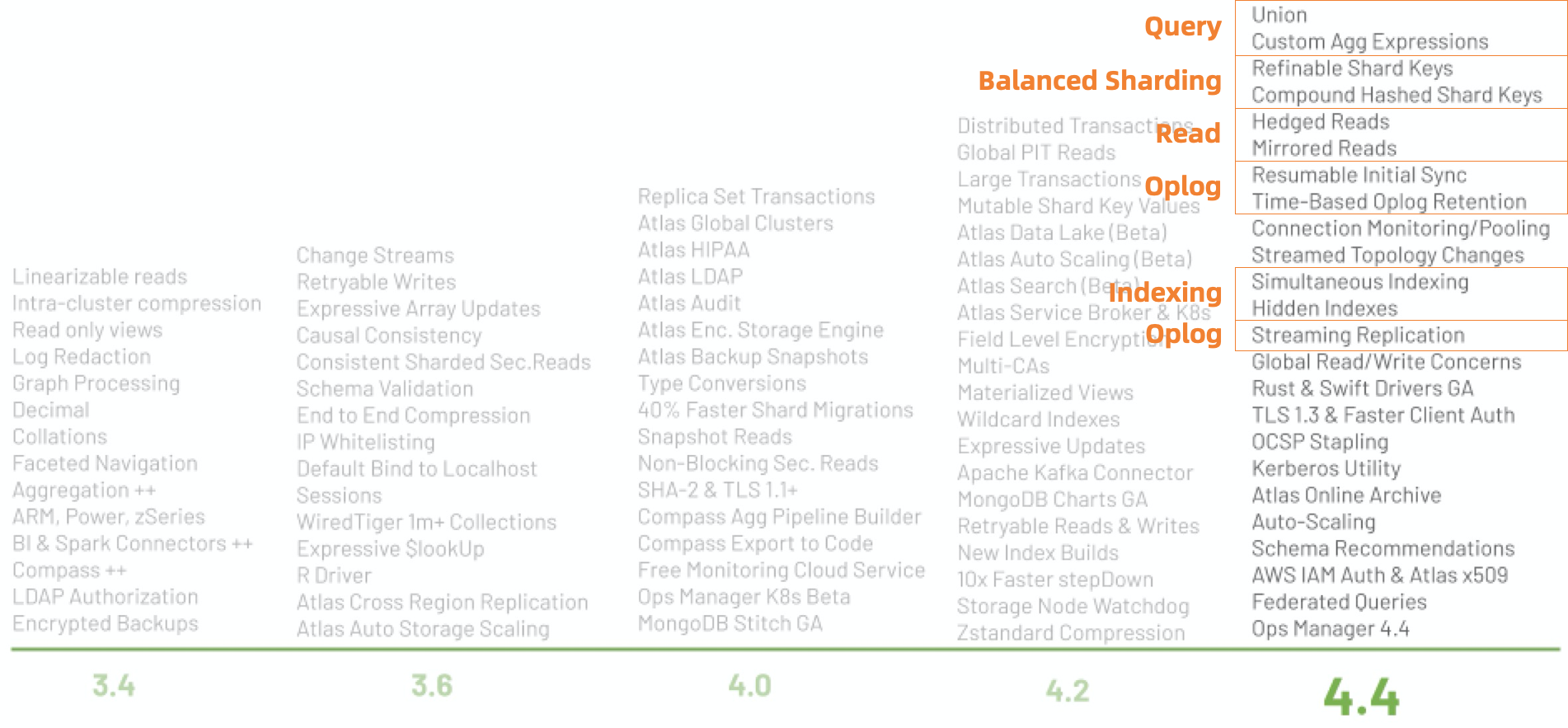
AnalyticDB for MySQL elastic mode is released on the international site to support the features of elastic plan, resource group isolation and tiered storage.
Elastic plan is a good feature for adapting the compute resource to the fluctuation of analytical business workload to achieve a balance between cost and flexibility. As shown in the figure below, there are 3 obvious intervals of analytical business load in a day, of which 08:30 am to 11:30 am is the business peak, other times are relatively stable. Set the corresponding elastic plan, the processing capacity is upgraded to 256 cores meets the business processing capacity requirements at the peak time, and the processing capacity falls back to 64 cores at other times saves cost. The granularity of the elastic plan supports hour, day, and week period settings.
For detailed information about the elastic plan, please refer to:https://www.alibabacloud.com/help/doc-detail/189507.htm
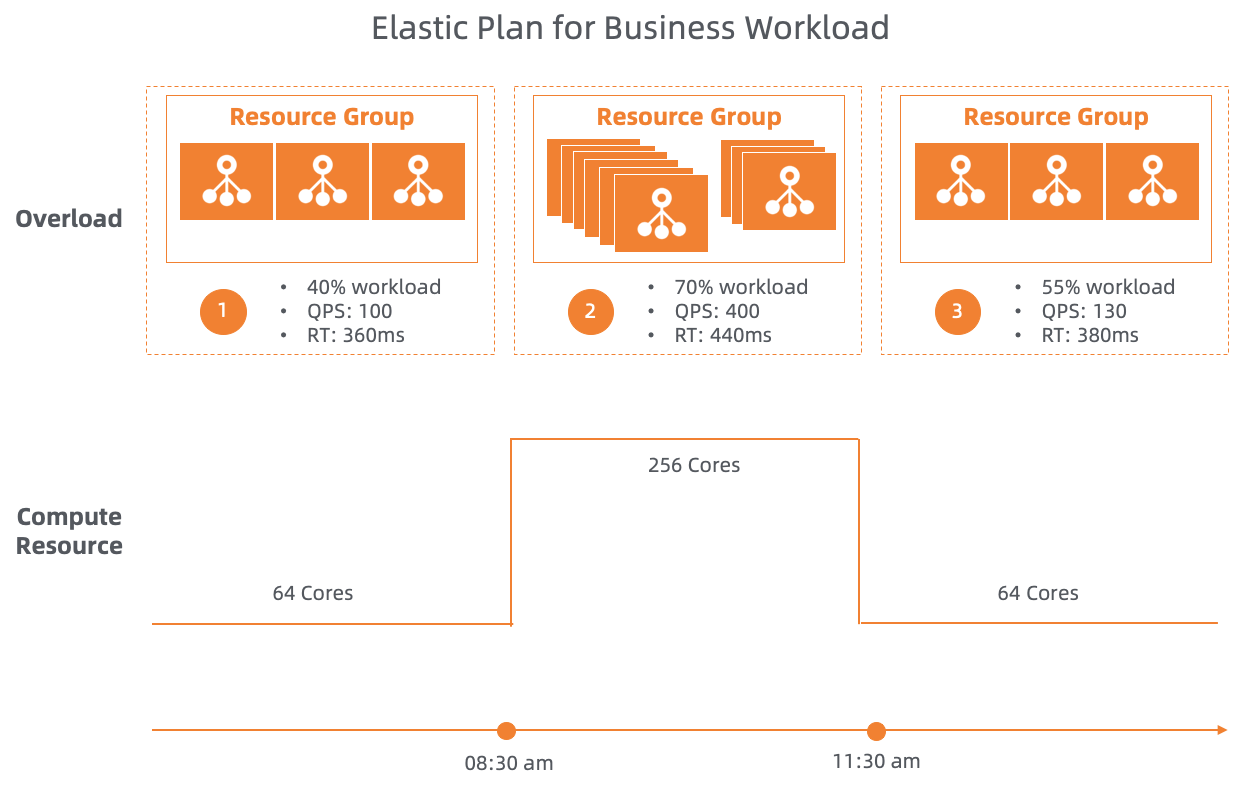
Resource group isolation is very convenient for "one copy of data, multiple workload scenarios" within a cluster. In the computing layer, multiple stateless resource groups can be extended. The computing resources for each resource group are isolated and do not affect each other. Each resource group can be specifically bound to a business workload.
For example, we can define 3 resource groups: a group for interactive analytics, a group for batch jobs, and a group of machine learning interactive jobs.
For detailed information about resource group isolation, please refer to: https://www.alibabacloud.com/help/doc-detail/189504.htm
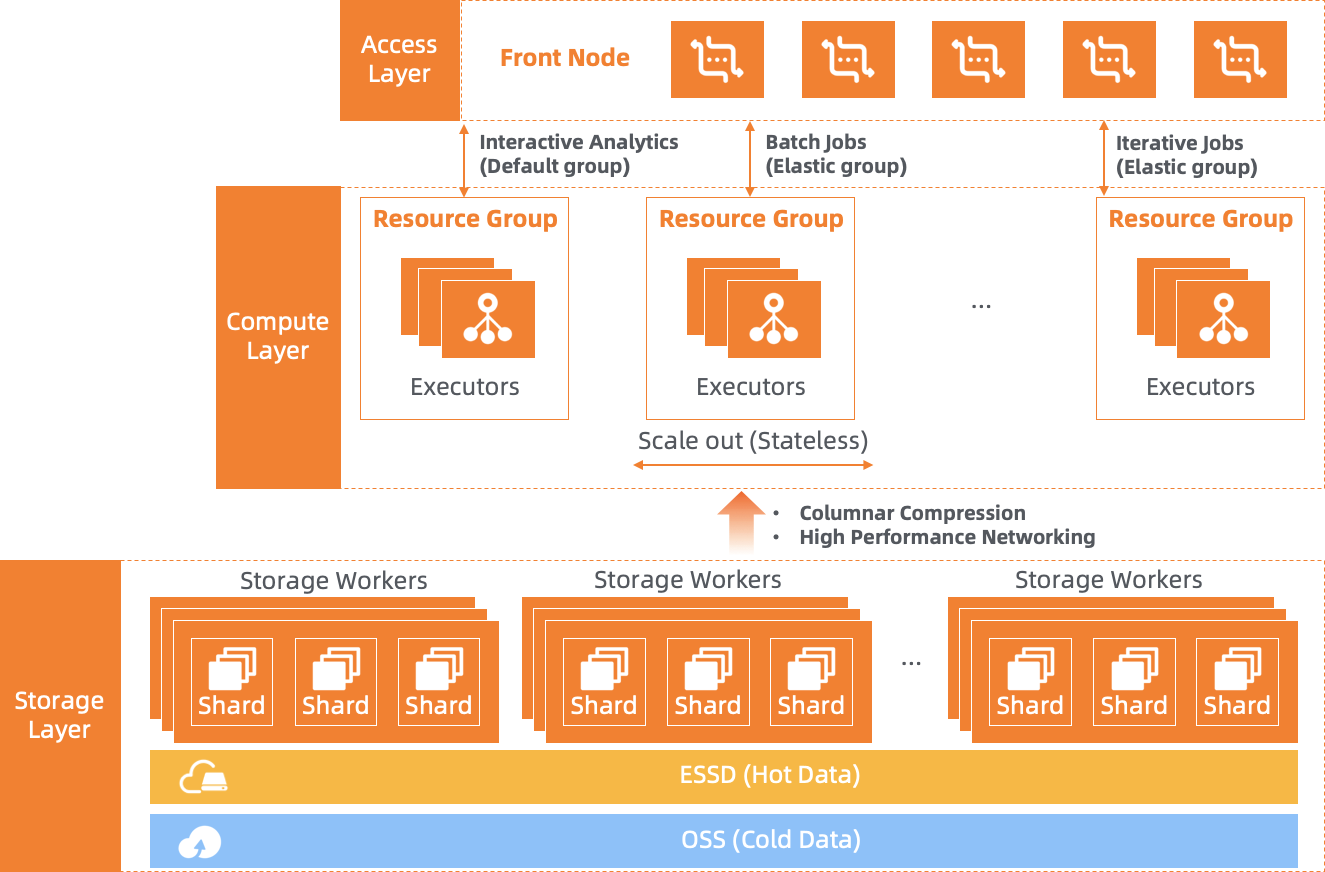
Hot (ESSD), warm (ESSD + OSS hybrid mode), cold (OSS) tiered storage is suitable for users to choose a suitable cost-effective storage method according to different business scenarios. For example, in the figure below:
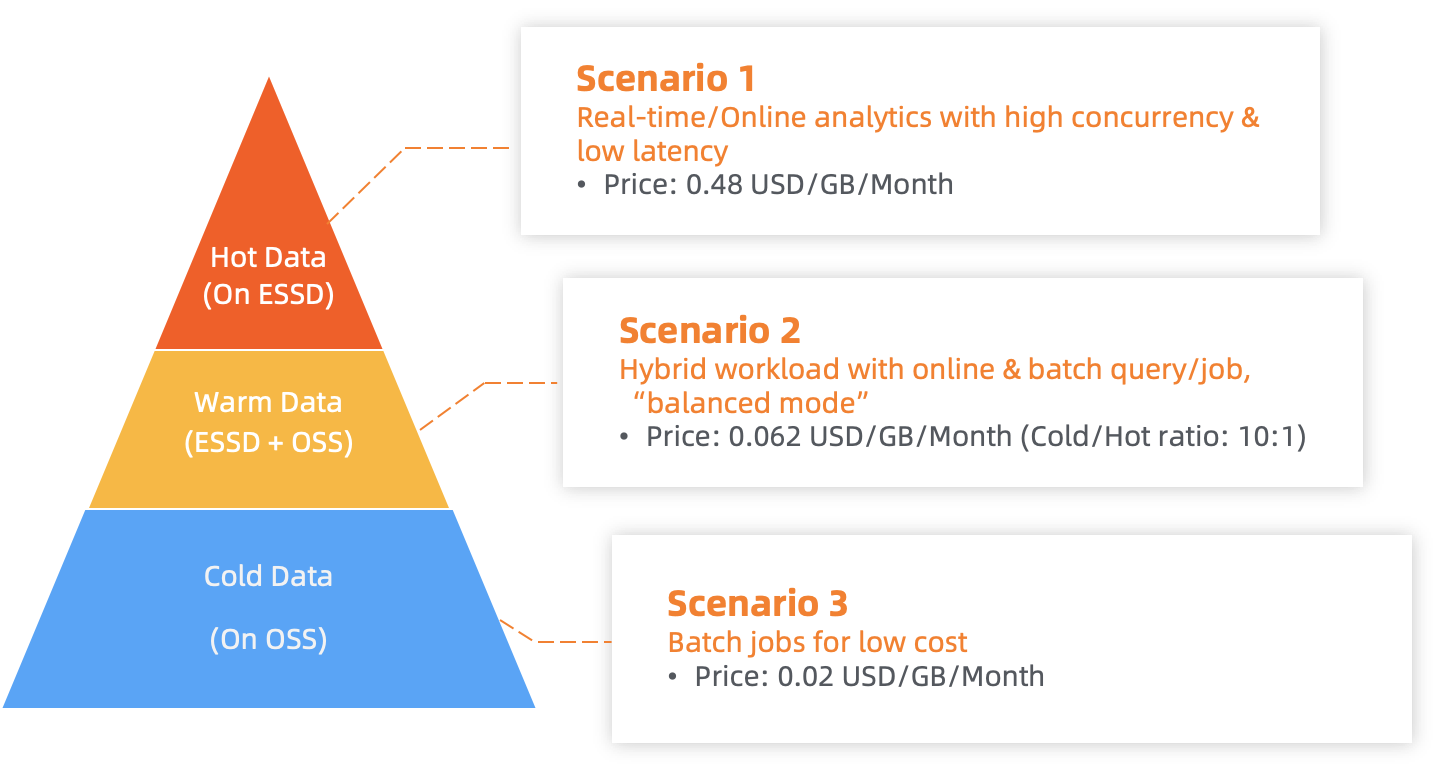
Note: Price is calculated for Alibaba Cloud Frankfurt region only
In the article, we highlighted the major updates of Alibaba Cloud Database during the past months, for the overall picture and more information about Alibaba Cloud Database, please visit https://www.alibabacloud.com/product/databases
ApsaraDB - June 19, 2020
JDP - February 10, 2022
JDP - September 15, 2021
JDP - December 23, 2021
ApsaraDB - July 12, 2018
Alibaba Clouder - December 30, 2020
 ApsaraDB RDS for PostgreSQL
ApsaraDB RDS for PostgreSQL
An on-demand database hosting service for PostgreSQL with automated monitoring, backup and disaster recovery capabilities
Learn More ApsaraDB RDS for MySQL
ApsaraDB RDS for MySQL
An on-demand database hosting service for MySQL with automated monitoring, backup and disaster recovery capabilities
Learn More ApsaraDB for MongoDB
ApsaraDB for MongoDB
A secure, reliable, and elastically scalable cloud database service for automatic monitoring, backup, and recovery by time point
Learn More PolarDB for PostgreSQL
PolarDB for PostgreSQL
Alibaba Cloud PolarDB for PostgreSQL is an in-house relational database service 100% compatible with PostgreSQL and highly compatible with the Oracle syntax.
Learn MoreMore Posts by ApsaraDB